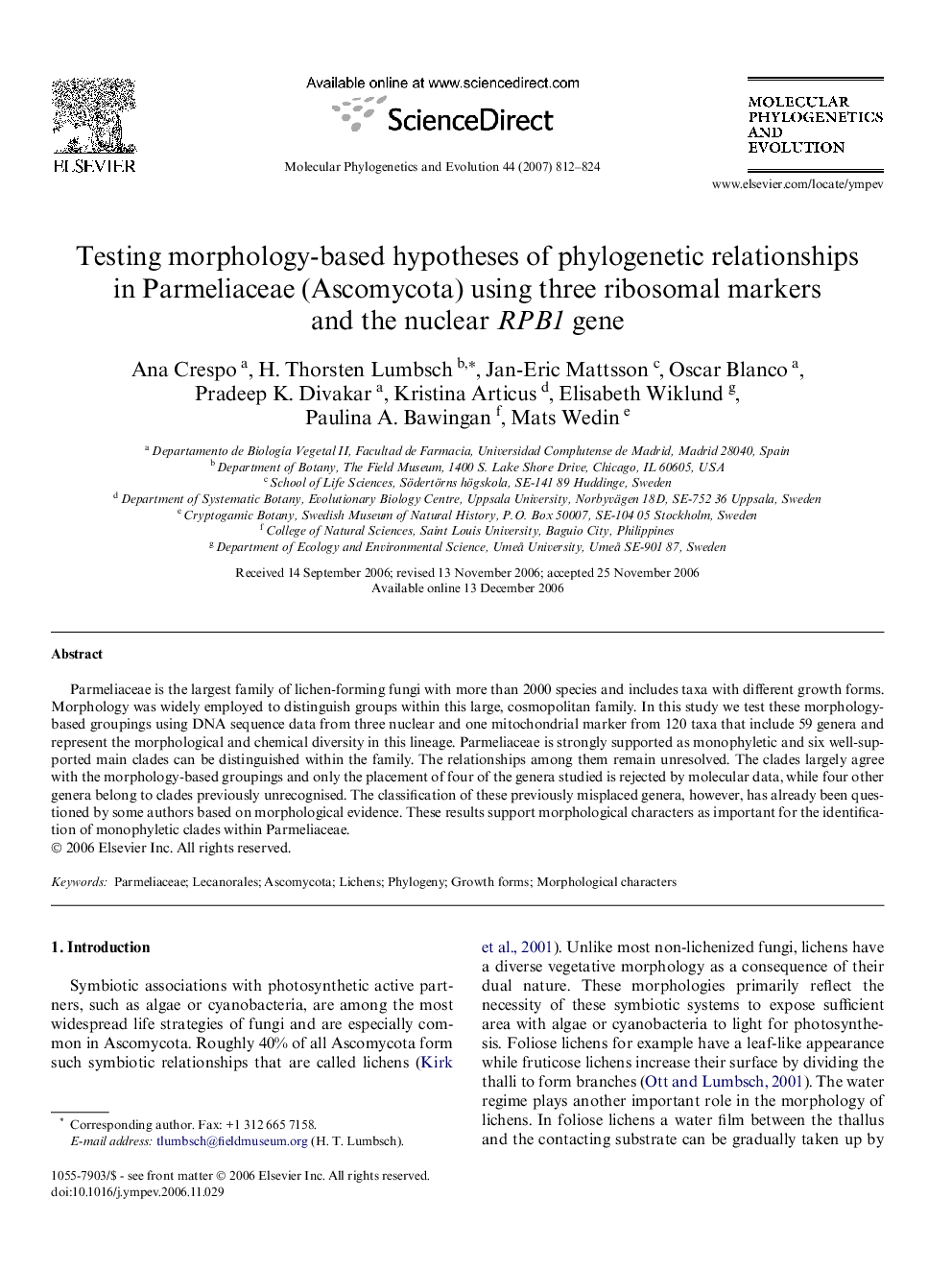| Article ID | Journal | Published Year | Pages | File Type |
|---|---|---|---|---|
| 2835562 | Molecular Phylogenetics and Evolution | 2007 | 13 Pages |
Parmeliaceae is the largest family of lichen-forming fungi with more than 2000 species and includes taxa with different growth forms. Morphology was widely employed to distinguish groups within this large, cosmopolitan family. In this study we test these morphology-based groupings using DNA sequence data from three nuclear and one mitochondrial marker from 120 taxa that include 59 genera and represent the morphological and chemical diversity in this lineage. Parmeliaceae is strongly supported as monophyletic and six well-supported main clades can be distinguished within the family. The relationships among them remain unresolved. The clades largely agree with the morphology-based groupings and only the placement of four of the genera studied is rejected by molecular data, while four other genera belong to clades previously unrecognised. The classification of these previously misplaced genera, however, has already been questioned by some authors based on morphological evidence. These results support morphological characters as important for the identification of monophyletic clades within Parmeliaceae.
